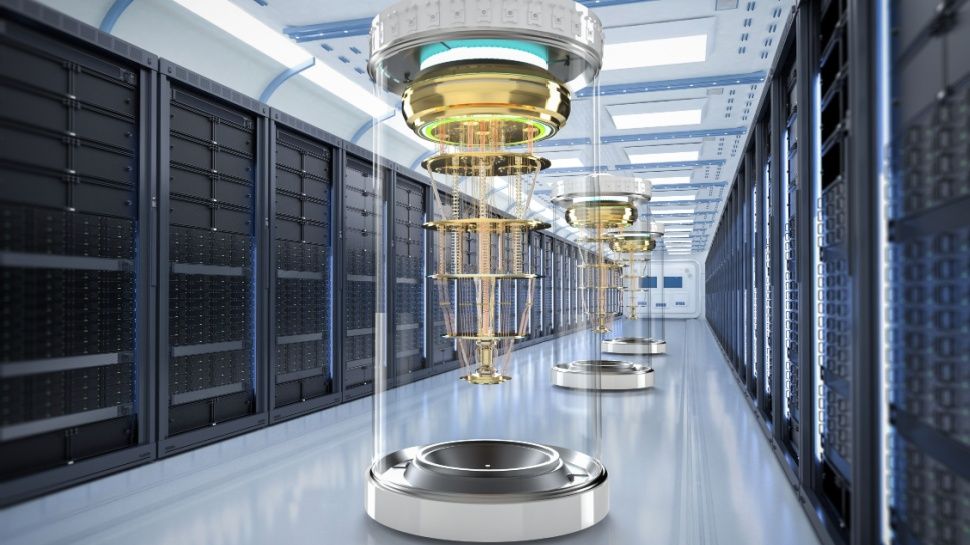Microsoft and Quantinuum claims to have made significant strides in the field of quantum computing through their a joint Azure Quantum project.
The companies say they have successfully created a new generation of highly reliable logical qubits, which are essential for achieving practical applications of quantum computing.
A few months ago, Microsoft and Quantinuum pioneered the creation of highly reliable logical qubits by applying Microsoft’s qubit-virtualization system to Quantinuum’s H-Series ion-trap qubits.
Azure Quantum
Initially, the companies managed to produce four logical qubits from 30 physical qubits. The logical error rate for the production was 800 times better than the physical error rate. Although Microsoft considered this feat as impressive, it kept pushing its boundaries and it paid off.
Now, the collaboration has expanded, resulting in the creation of 12 logical qubits from 56 physical qubits on Quantinuum’s H2 machine, showcasing a remarkable 99.8% fidelity in two-qubit operations.
The teams demonstrated the entanglement of these logical qubits in a complex arrangement known as a Greenberger-Horne-Zeilinger (GHZ) state, which is more intricate than previous Bell state preparations. This entanglement resulted in a circuit error rate of 0.0011, significantly lower than the physical qubits’ error rate of 0.024. Such advancements not only highlight the potential for deeper quantum computations but also pave the way for fault-tolerant quantum computing, a crucial step towards realizing the full capabilities of quantum technology.
The collaboration between Microsoft and Quantinuum is also a milestone in the application of quantum computing to real-world problems, particularly in the field of chemistry. By integrating logical qubits with artificial intelligence (AI) and cloud high-performance computing (HPC), they successfully tackled a complex scientific problem of estimating the ground state energy of an important catalytic intermediate.
The process began with the identification of the active space of the catalyst through HPC simulations. Following this, the logical qubits were employed to simulate the quantum behaviour of the active space. The measurement outcomes from these simulations were then utilized to train an AI model, which ultimately provided an accurate estimate of the ground state energy. This end-to-end workflow represents the first instance where quantum computing, HPC, and AI have been combined to solve a scientific problem, demonstrating the practical utility of quantum technologies.
While the current results do not yet represent a full scientific quantum advantage—defined as the ability of quantum computers to solve problems beyond the reach of classical computers—they showcase the potential for quantum systems to outperform classical methods in specific scenarios. The hybrid approach employed in this study illustrates how quantum computing can enhance the accuracy of chemical computations, particularly for complex problems that are challenging for classical systems.
The successful demonstration of this hybrid workflow not only highlights the capabilities of the logical qubits but also emphasizes the importance of integrating quantum computing with other advanced technologies. By combining the strengths of quantum, AI, and HPC, researchers can develop innovative solutions to pressing scientific challenges.
The Azure Quantum platform serves as a central hub where quantum computing, AI, and high-performance computing (HPC) converge. This ecosystem is designed to facilitate seamless interactions between different hardware architectures, enabling researchers to leverage the strengths of each technology. By combining quantum capabilities with AI, researchers can utilize machine learning algorithms to analyze vast datasets and extract meaningful insights, significantly speeding up the research and development process.
Looking ahead, Microsoft claims that it is committed to advancing its Azure Quantum platform to support a variety of qubit architectures, including neutral-atom qubits and topological qubits. The integration of these diverse technologies aims to enhance the reliability and scalability of quantum computing, ultimately leading to the development of systems capable of addressing some of the world’s most significant challenges.
“The ability of our systems to triple the number of logical qubits while less than doubling our physical qubits from 30 to 56 physical qubits is a testament to the high fidelities and all-to-all connectivity of our H-Series trapped-ion hardware,” said Rajeeb Hazra, CEO of Quantinuum.
“Our current H2-1 hardware combined with Microsoft’s qubit-virtualization system is bringing us and our customers fully into Level 2 resilient quantum computing. This powerful collaboration will unlock even greater advancements when combined with the cutting-edge AI and HPC tools delivered through Azure Quantum.”






